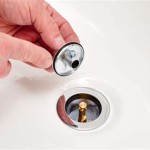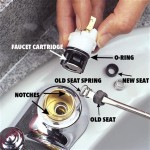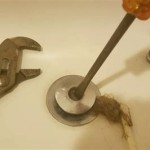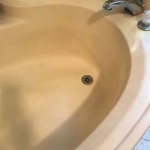Old Bathtub Faucet Replacement
Replacing an old bathtub faucet can significantly improve bathroom aesthetics and functionality. Dripping faucets waste water and money, while outdated fixtures can detract from the overall bathroom design. This article provides a comprehensive guide to replacing an old bathtub faucet, outlining the necessary tools, materials, and steps involved in the process.
Before beginning the replacement process, it's essential to identify the type of bathtub faucet currently installed. Common types include centerset, widespread, and wall-mounted faucets. Centerset faucets have two handles and a spout mounted on a single base, typically with a 4-inch spread. Widespread faucets feature separate handles and spout, offering greater flexibility in placement. Wall-mounted faucets, as the name suggests, are mounted directly to the wall, providing a sleek and modern look.
Once the faucet type is identified, gather the necessary tools. These typically include an adjustable wrench, basin wrench, Phillips screwdriver, flathead screwdriver, plumber's putty, Teflon tape, and a small bucket or container. It's also recommended to have a flashlight and safety glasses on hand. Depending on the specific faucet and plumbing configuration, additional tools may be required.
The next step is to shut off the water supply. Locate the shut-off valves for the hot and cold water lines supplying the bathtub. These valves are usually located beneath the sink or in a nearby access panel. Turn both valves clockwise to completely shut off the water flow. Once the water is off, turn on the bathtub faucet to release any remaining water pressure in the lines.
With the water supply shut off, the removal of the old faucet can begin. Start by disconnecting the water supply lines from the faucet tails. Use an adjustable wrench to loosen the nuts connecting the supply lines to the faucet tails. Place a small bucket or container beneath the connections to catch any residual water. Once the supply lines are disconnected, use a basin wrench to loosen and remove the nuts securing the faucet to the bathtub or wall. Depending on the faucet type, these nuts may be located underneath the sink or behind the tub wall.
After the old faucet is removed, clean the mounting surface thoroughly. Remove any old plumber's putty, caulk, or debris. A clean mounting surface ensures a proper seal for the new faucet. Once the surface is clean and dry, apply a thin layer of plumber's putty around the base of the new faucet.
Carefully position the new faucet onto the mounting surface, ensuring proper alignment. Tighten the mounting nuts using a basin wrench or adjustable wrench, depending on the faucet type. Avoid overtightening, as this can damage the faucet or the bathtub. Connect the water supply lines to the faucet tails, using Teflon tape on the threads to prevent leaks. Tighten the connections securely with an adjustable wrench.
Once the faucet is installed and the water supply lines are connected, turn the water supply back on slowly. Check for leaks around the faucet base and connections. If any leaks are detected, tighten the connections as needed. If leaks persist, it may be necessary to disassemble the faucet and reapply plumber's putty or Teflon tape.
Choosing the right replacement faucet involves considering factors such as style, finish, and functionality. Faucet styles range from traditional to modern, with a variety of finishes available to match existing bathroom fixtures. Consider features such as water-saving technology, temperature control, and ease of use. It's also important to ensure the new faucet is compatible with the existing plumbing configuration.
While replacing a bathtub faucet can be a manageable DIY project, some situations may require professional assistance. If the existing plumbing is in poor condition or if there are complexities beyond the scope of a typical replacement, it's best to consult a qualified plumber. A professional plumber can assess the situation, provide expert advice, and ensure the replacement is done correctly and safely.
Regular maintenance can extend the lifespan of a bathtub faucet and prevent future problems. Periodically inspect the faucet for leaks, drips, or signs of wear and tear. Clean the faucet regularly to remove mineral deposits and prevent buildup. Addressing minor issues promptly can prevent them from escalating into more significant problems requiring costly repairs.
Old Two Handle Bathtub Faucet Mister Plumber

Antique Faucet Repair

How To Replace A Bathtub Spout Diy Family Handyman

Barclay Vintage Leg Tub Faucets And Accessories

Bathtub Spout Replacement Diy Home Improvement Forum

6 Inch Center Tub And Shower Valves Faucets Retro Renovation

How To Fix A Leaking Bathtub Faucet Diy Family Handyman

Replacing Shower Tub Faucet How To Install A New

Vintage Tub Faucet Replace

Old Fashioned Tub Spouts
Related Posts








